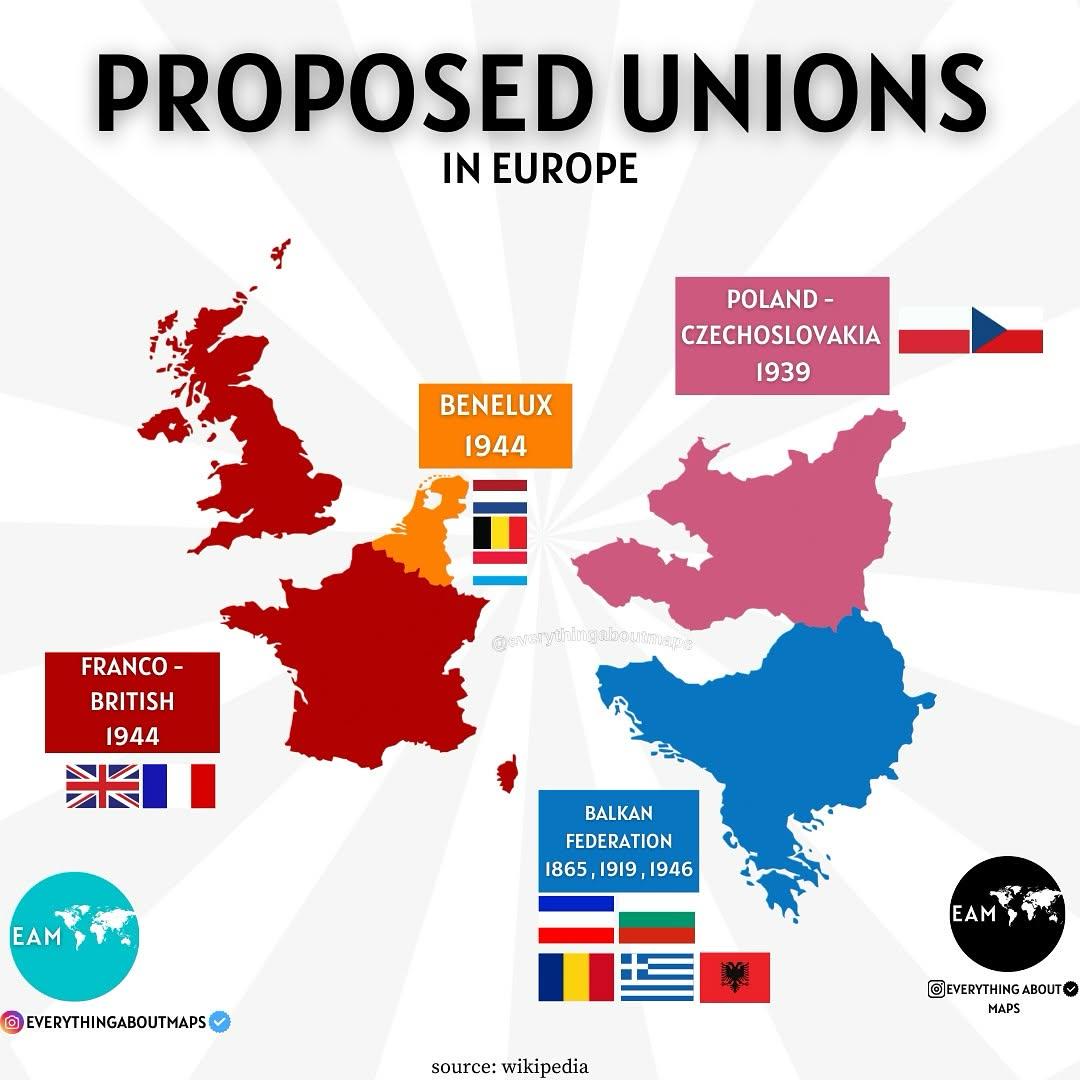Unlikely Proposed European Unions Map


Marcus Rodriguez
Historical Geography Expert
Marcus Rodriguez specializes in historical cartography and geographic data analysis. With a background in both history and geography, he brings unique...
Geographic Analysis
What This Map Shows
This visualization outlines some of the more unlikely proposed European unions, highlighting various regional groups and their aspirations for political or economic unity. The map reveals the complexity of European geopolitics, showcasing regions that have frequently been discussed in terms of potential alliance or unification. These discussions often arise from shared cultural, historical, or economic ties, but they also reflect the unique challenges faced by different regions in the modern political landscape.
Deep Dive into Unlikely European Unions
The idea of unions or federations in Europe is not new; historically, the continent has been a tapestry of alliances and conflicts. However, the proposals highlighted in this map bring attention to areas that may seem unconventional at first glance. For instance, the concept of a Catalonian state joining a broader Iberian Union alongside Portugal has gained traction among regional leaders advocating for greater autonomy from Spain. This proposed union is fueled by a strong sense of identity and a desire for self-governance, but it raises questions about economic viability and administrative coherence.
Interestingly, the map also points to the notion of a Scandinavian Union that would include not only the Nordic countries of Sweden, Norway, and Denmark but also Finland and Iceland. This idea is rooted in historical ties and cultural similarities, yet it faces practical challenges, such as differences in political systems and economic policies. Would a unified Scandinavian approach to issues like immigration or environmental policy be more effective, or would the diversity of interests lead to conflict?
Another intriguing proposal is the idea of a Balkan Union that seeks to unite the countries of the former Yugoslavia. Many argue that regional cooperation could help mitigate longstanding ethnic tensions and foster economic growth. However, political divisions remain significant obstacles. The legacy of conflict in the region complicates the feasibility of such a union, yet advocates claim that greater collaboration could promote peace and stability.
The ambition for a Mediterranean Union, incorporating countries from both the northern and southern shores, also appears on the map. This initiative aims to address common challenges such as migration, climate change, and economic disparities. However, the differing political landscapes and economic conditions between Southern European countries and their Northern counterparts present substantial hurdles.
Regional Analysis
Examining the map reveals distinct motivations across various regions. For instance, in Western Europe, proposals may stem from economic necessity or shared historical experiences. The Benelux countries—Belgium, the Netherlands, and Luxembourg—have long enjoyed economic cooperation, and discussions about deeper integration continue to surface, especially concerning trade and environmental policies.
In contrast, Eastern Europe presents a different picture. The idea of a Slavic Union, which might encompass Russia, Ukraine, and Belarus, often emerges from cultural and historical connections. However, political realities complicate this vision. The ongoing conflict in Ukraine and tensions between Russia and the West create a landscape where such proposals seem distant.
Interestingly, Southern Europe, particularly the Iberian Peninsula, often rallies around shared cultural heritage but faces economic disparities that make unification challenging. The economic crisis in Greece and its aftermath serve as a reminder of the complexities involved in regional integration, especially when financial stability is at stake.
Significance and Impact
Understanding the dynamics of these proposed unions is crucial for grasping the future of Europe. With tensions around identity, sovereignty, and economic stability on the rise, the implications of these discussions resonate beyond mere political theory. The evolving landscape of European politics suggests that collaboration may be essential to tackle pressing issues such as climate change, migration, and economic inequality.
As we look ahead, the question remains: will these proposals evolve into tangible unions, or will they remain theoretical discussions? Current trends indicate a desire among many regions to explore greater autonomy and self-determination, yet the complexities of governance and economic integration cannot be overlooked. The map serves as a reminder that while the notion of unity in diversity is appealing, the path toward achieving it is often fraught with challenges. Will these unlikely unions ever materialize? Time will tell, but the conversation is an essential part of Europe's evolving identity.
Visualization Details
- Published
- October 5, 2025
- Views
- 36
Comments
Loading comments...